

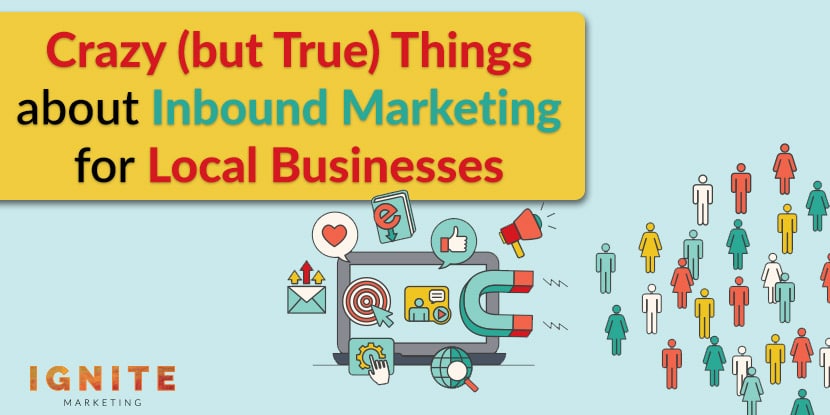
The Entire Series:
Two decades ago, direct mail, TV, radio, email blasts, trade shows, door-to-door sales, and print advertising were all the rage in the marketing world.
Then along came inbound marketing, which pretty much flipped traditional marketing tactics on their head. And instead of chasing dollars pounding pavements and distributing mailers that get thrown in the trash, you can now build an online system that has dollars chasing you.
Do traditional marketing methods still work?
Sure, but they’re not as effective as they once were.
The reality is that the way people learn about new products and services has drastically changed. According to BrightLocal’s latest consumer research, 97% of consumers searched online for local businesses in 2017—a 2% increase from the previous year. Of those people, 12% searched for a local business every day and 54% searched at least once a month.
You might believe these staggering statistics are related to factors like convenience, but as inbound marketing pioneers and Hubspot founders Brian Halligan and Dharmesh Shah pointed out in their popular book Inbound Marketing: Attract, Engage, and Delight Customers Online:
“People did not want to be interrupted by marketers or harassed by salespeople. They wanted to be helped.”
And that, fellow entrepreneur, is the premise of inbound marketing.
In this post, I’ll break down the concept of inbound marketing and how implementing a well-executed inbound strategy for your own local business can help you make it rain.
First, it’s important to understand that it’s not a particular tactic or channel. It’s a proven methodology based on the idea that people don’t want interruptive marketing messages. They want relevant, personalized, and useful content that offers them value.
So, what exactly is inbound marketing?
The short version:
Attraction + Conversions = Customers
The long version:
In contrast to traditional or outbound marketing where you have to find customers, inbound marketing uses a variety of channels to attract customers through helpful content designed to address the problems and needs of a specific target audience and add value at every stage of a consumer’s buying journey. A stranger becomes a lead, a lead becomes a buyer, and the buyer then becomes an advocate of your business. You don’t have to compete for the attention of potential customers, it makes your business easy to find, you draw in qualified leads, and you build credibility and trust while doing it.
According to Inbound Marketing for Dummies by Scott Anderson Miller, 93% of businesses that practice inbound marketing experience an increase in lead generation. This powerful conversion process is the reason the methodology is spreading fast and furious amongst businesses of all sizes.
Anderson Miller includes a great little table outlining the key differences between traditional and inbound marketing.
 With the definition clearer, how does inbound marketing work?
With the definition clearer, how does inbound marketing work?
Here’s what a typical inbound marketing structure looks like:
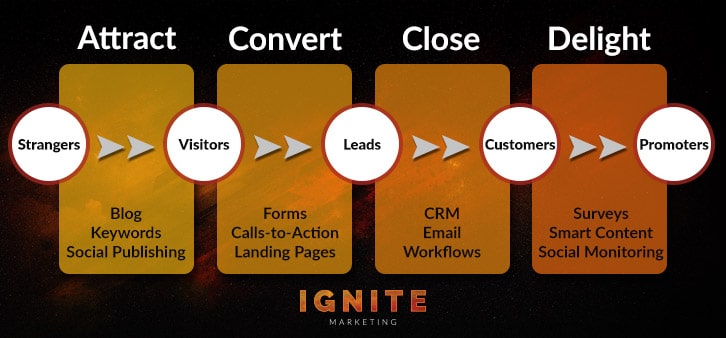
Phase 1: Attract
This first stage is all about helping people find you and then converting those strangers into visitors. However, you don’t want to attract just anyone. You need to appeal to the right people (i.e. your ideal customer) on the right platforms at the right time through relevant, compelling content and by appearing in search results. This is often done through tactics like blogging, search engine optimization, and social media marketing.
Phase 2: Convert
After you’ve attracted visitors to your site, you want to turn them into leads. Leads are people who express interest in your product or service by taking a specific action such as signing up. The intent is to provide extraordinary value so that they’re tripping over themselves to get it. This value often comes in the form of a free ebook, guide, educational webinar, or something equally as valuable. Converting them is usually done through signup forms, calls-to-action, and landing pages. This allows you to gather crucial contact information such as the person’s name, email address, and phone number so that you can start a conversation and nurture the prospect into a paying customer, which brings us to phase 3.
Phase 3: Close
Once you have a lead’s contact information, the next step is to transform that individual into a customer. Although it can take six to eight touchpoints to qualify a lead as sales-ready, you have several potent weapons that can help you along the way including customer relationship management software that tracks various stages of your customer acquisition, email marketing, lead scoring techniques, and automated workflows.
Phase 4: Delight
If you ask local business owners how most customers find them, many will tell you the majority of their business comes from referrals (a.k.a. word-of-mouth marketing). This makes this final phase of the inbound marketing process all the more important because it deals with providing a remarkable post-purchase experience so that customers become promoters of your business. Although you should be creating the best experience at every stage, you should also continue to communicate with customers long after they’ve handed you their cash by providing value through conversations, additional content, social media monitoring, and surveys.
For the purposes of this post, I’ll break down certain components within the attract, convert, and close phases even further because there are some disturbing misconceptions about inbound marketing that are holding many local and small business owners back from implementing a strategy of their own. While this post will provide a brief overview, additional blogs in this series will break each one down step by step with practical tips for making your inbound efforts a success. But let’s first blow some of those misconceptions out of the water.
 Myth #1: Inbound marketing won’t work as well as other methods we’re using.
Myth #1: Inbound marketing won’t work as well as other methods we’re using.
Truth: Aberdeen Group conducted a study that revealed conversion rates for content marketing adopters are nearly 6X higher than those produced by non-adopters. In addition, Demand Metric found that inbound costs around 62% less than outbound methods while generating 3X as many leads. People don’t respond to traditional marketing practices with the same enthusiasm as they once did, so why try to sell like it’s the 90s? Consumers are smarter and more informed than ever before, which means your business either has to adapt or die.
Myth #2: It’s too much effort.
Truth: Look, it’s doubtful you’ll find any marketer who’ll tell you that inbound marketing isn’t hard work—but that’s mostly upfront effort in establishing and implementing a strategy. In many cases where inbound has failed for smaller businesses, the owner has latched onto just one or two elements and forgotten the rest. Either they just don’t have the capacity to do any more or they’ve attempted to create their own version of inbound marketing with dismal results. But inbound marketing is robust and requires an all-in approach. Fortunately, outsourcing to skilled teams like ours can take the pressure off and ensure the process goes a whole lot smoother. You’re not alone—even if you are a one-man band.
Myth #3: Inbound marketing takes too long to produce results.
Truth: Okay, so there’s no getting around the fact that inbound marketing is a long game that requires commitment and can take anywhere from six to nine months before you see a return. The upside is that once you’ve implemented a strategy, you’re looking at long-term results. Unlike PPC campaigns that offer instant, short-term gains, you’ll find your inbound system drives revenue years from now without you having to lift a finger.
When all is said and done, it boils down to this:
The biggest problem small businesses face is lead generation—specifically, acquiring enough leads to keep the lights on and the operation churning. Inbound marketing is the solution.
According to Ironpaper, previous Hubspot reports on the state of inbound disclosed that 46% of marketers found inbound marketing produced a higher ROI compared to only 12% using outbound tactics and that 59% of marketers believed inbound practices generated better quality leads. If that alone doesn’t convince you inbound marketing has become a necessity for all businesses, consider these additional advantages:
Ultimately, inbound works: the time, work, and money are justifiable. All you need to do is start building one of the best ROI-driving engines in today’s challenging and diverse marketing landscape.
Now that those myths are dispelled and you understand why you need a local inbound strategy to survive, let’s take a closer look at some of the key components of inbound marketing and how other local businesses are nailing them. After all, there’s no better way to learn than by example.
If you already publish content to a blog on your local business website then you’re already playing the inbound game. Content is at the forefront of inbound and a blog is one of the best and easiest ways to attract new traffic to your site. In addition, it plays a vital role in educating prospects for lead generation and nurturing.
Hubspot research indicates that B2C businesses that blog 11 or more times per month gained 4X as many leads as blogs only publishing 4-5 times per month. Additional stats revealed that when businesses blog once per week, 67% acquire a customer through their blog. That figure rises to 92% when they blog multiple times a week.
Besides increasing website visitors and converting that traffic into leads, blogs enhance search ranking efforts, increase visibility, build authority, facilitate engagement, contribute to local community awareness, and drive long-term results. However, blog content must be valuable, helpful, and targeted.
Consider this blog by RE/MAX in Boulder, Colorado.
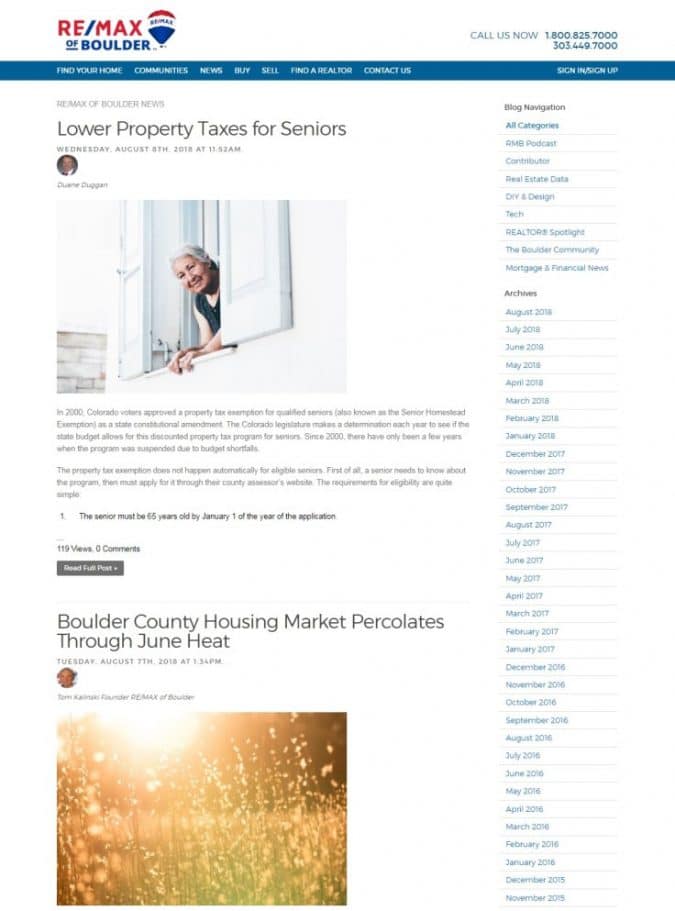
Besides being super consistent in their posting schedule, the topics of their posts are all targeted towards their ideal buyer personas. They know their audience, they know what’s relevant to them, and they understand the power of positioning themselves as a helpful resource in the area.
Effective inbound marketing simply doesn’t work without search engine optimization. It’s fundamental to your visibility in search results, which is why creating a well-structured website design, using relevant keywords your audience uses to search for businesses like yours, and applying SEO best practices both on-site and across platforms is so important.
Consider these search results for “New York dentist.”
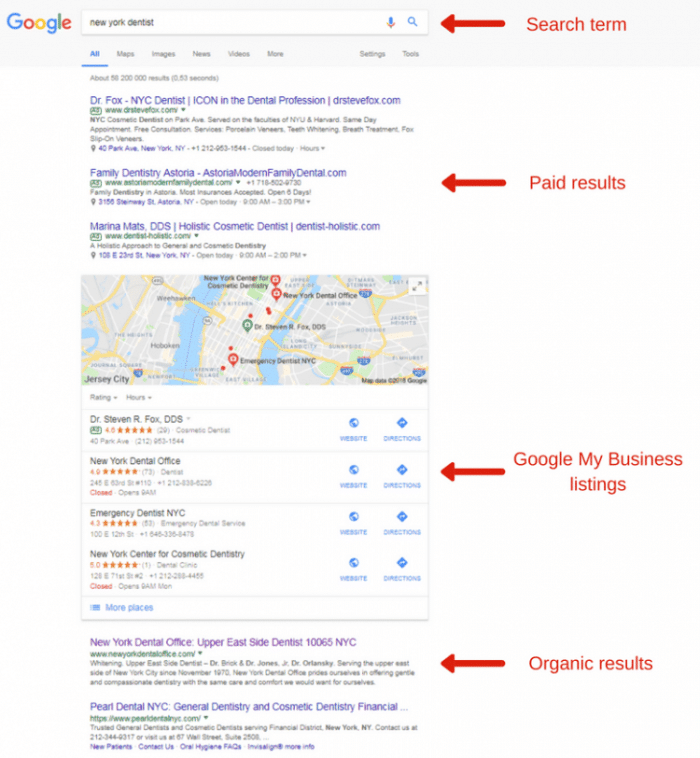
Notice in our example how New York Dental Office have not only optimized their site so that it ranks #1 in organic search, but the owners have also claimed and optimized their My Google Business listing so that their dental practice is suggested twice for the “New York dentist” keyword phrase. (Don’t worry, we’ll teach you how to do that in future posts within this series.)
According to eConsultancy research, 94% of the links users click on are organic while 68% of all organic clicks fall within the top three search results. Further data published by Business 2 Community indicates that leads from content searches are 8X more likely to close than traditional leads. But perhaps most importantly, Google reveals that 75% of people who find local information in search results are likely to visit the business and Junto says 18% of location-based mobile searches lead to a sale within one day.
Although the concepts of SEO and content creation might seem overwhelming at first, especially to local business owners who know almost nothing about online marketing, more and more tools are becoming available to make the process easy and less time-consuming. It’s not enough to simply have a website. Content and SEO must be a priority for both traffic and conversions.
Social media platforms like Facebook, Instagram, Pinterest, and Twitter offer a huge opportunity for inbound marketers. Besides helping you put a face to your brand, increasing your visibility and reach, and allowing you to share valuable information in a variety of formats including text, video, and images, social media lets you engage with prospects to create meaningful conversations that lead to stronger customer relationships.
Case in point, check out these social media profiles by Cisco Brewers based on Nantucket Island off Cape Cod.
Twitter:
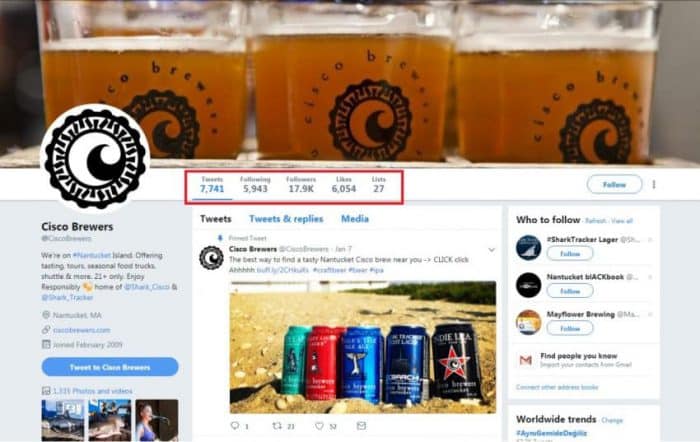
Instagram:
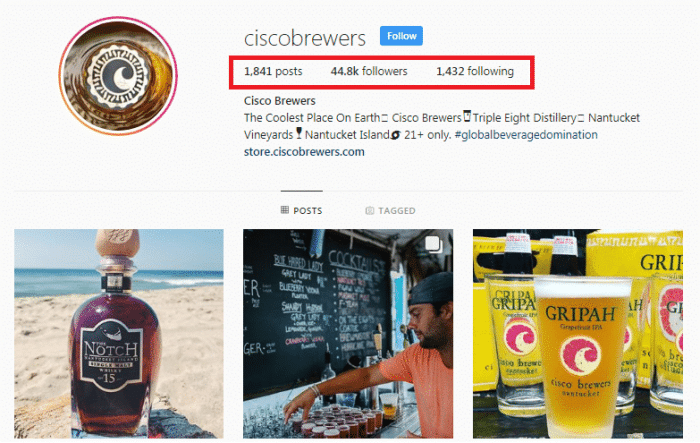
Facebook:
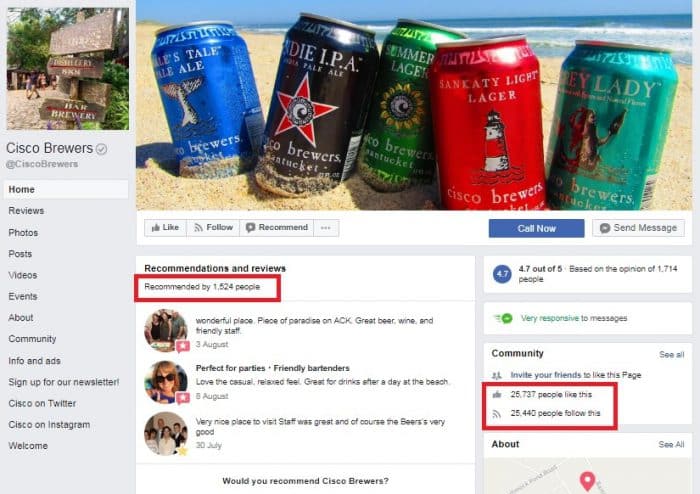
Their social media game is on point, racking up thousands of followers, likes, comments, recommendations, reviews, and more. The result of all that activity is that they’re better positioned in search results, they’re growing their brand awareness, and they’re far more likely to attract the right people to their business. In addition, they’re collecting a ton of data on key metrics and audience demographics that will help them run more effective paid campaigns in the future.
If managing multiple social media accounts seems just too daunting, consider this: social media produces a 100% higher lead-to-close rate compared to outbound marketing and 64% of consumers say that watching a video on social media lead to a purchase. As with other components of inbound, there are now thousands of social media marketing tools that can help you make the biggest impact with the little time you have—after all, it’s quality over quantity.
Okay, so I’m cheating here.
If you look at the inbound marketing structure above, you’ll see that the “Convert” phase includes forms, calls-to-action, and landing pages. Well, you’re going to find at least one of those things at the start of a sales funnel, so I’m simplifying things.
In order for a visitor to become a lead, they need to provide you with their contact details by converting on an offer. An offer can be anything from a free trial, download, or demo to a consultation, newsletter, and more.
Let’s take a look River Pools and Spas based in Warsaw, Virginia for instance. Depending on which page of their website you find yourself on, you’ll discover a form like this one for requesting a quote:
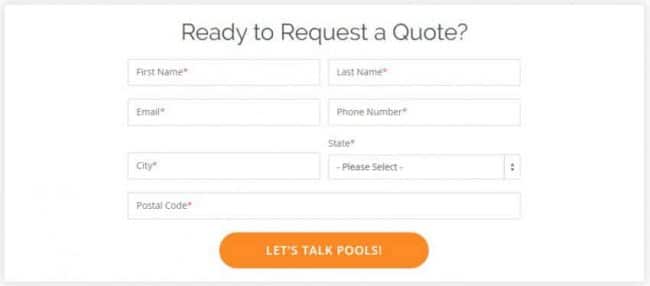
Or like this one for requesting pricing:

However, you’ll also discover they have a popup form for blog subscriptions:
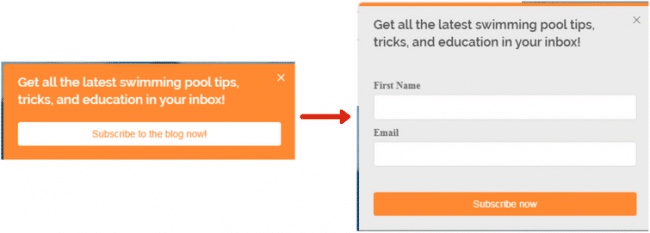
And a dedicated landing page for their free ebook:
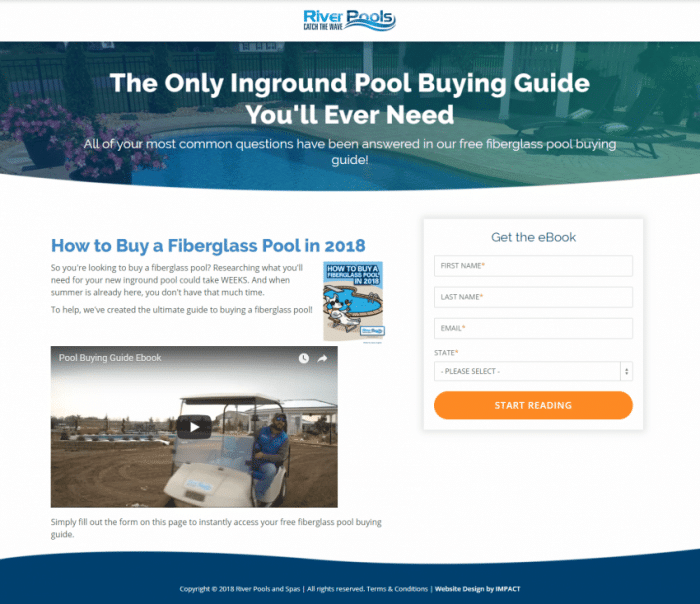
The great thing about a lead generation funnel is that as long as your offer is designed to pull in customers based on their specific needs, it’ll fill with sales prospects while you sleep. And the more points of conversion you have, the more leads you’ll gain. In fact, companies that increase their landing pages from 10 to 15 see a 55% growth in leads.
The third phase of inbound marketing focuses on the close. Although you might have converted your visitor into a qualified lead, your prospect might not be ready to buy yet. Email marketing is a powerful tool that can influence a decision by effectively nurturing your lead into a sale. And nurtured leads make 47% larger purchases than non-nurtured leads.
So what’s the difference between an inbound email and an outbound email blast?
Inbound marketing emails are different from the outbound variety in that your new contact is warm and has opted in to receive communication from you. There’s personalization where possible, the content is targeted, the content is valuable to the recipient, the frequency and timing of your email communications is in line with your sales cycle, and your lead has the option to unsubscribe at any time. These emails generally include an initial ‘welcome’ or ‘thank you’ email followed by a series of nurturing emails that provide additional information pertaining to the offer the person has claimed.
For example, after signing up for free 1-day pass to NRG Lab Fitness Center in Mansfield, Massachusetts, prospects receive this friendly ’thank you’ email along with additional information about what’s included and a call to action:
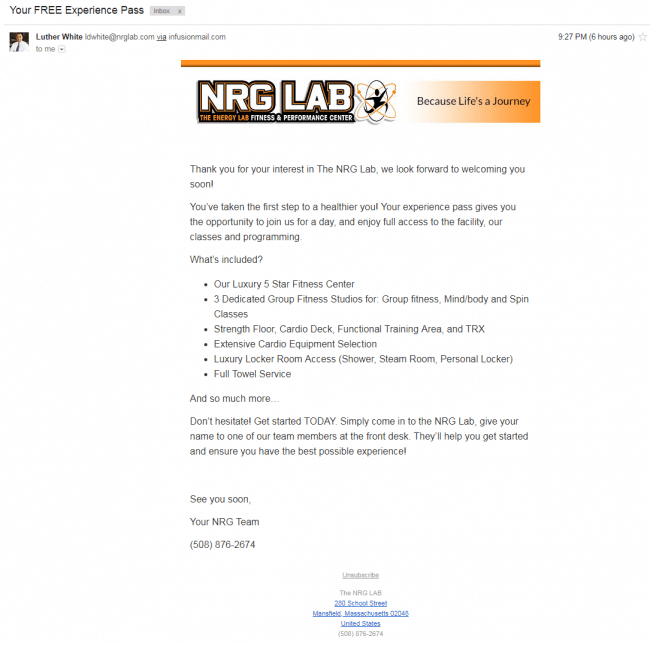
Additional emails in an inbound campaign like this could include things like tips for losing weight, information on how to make the most of the gyms facilities, links to relevant blog posts, introductions to staff or personal trainers, and more. A final email in the sequence might include an offer on a discounted membership or something equally as compelling. It’s interesting to note that welcome emails produce around 320% more revenue per email than other promotional emails.
But email marketing isn’t only a way to continue the conversation. It’s also a way to build trust with a prospect. The more they trust you, the more likely they are to convert on a paid offer. Email can also be highly effective for increasing customer retention. And as a bonus for a small local business owner who’s already pressed for time, they can be automated.
Inbound purists argue that online ads aren’t part of the family. However, paid search and social media ads work with inbound marketing to create the best results. Whether it’s paid search results that serve up relevant content to satisfy a consumer’s needs or it’s wrapped up in hyper- targeting on platforms like Facebook, the ads attract and they attract the right people. Furthermore, they help generate returns faster than organic methods.
If you’d like to know more about setting up an inbound sales funnel with Facebook Ads being the primary source of traffic, be sure to download our free step-by-step guide:
Within the space of a few clicks, anyone anywhere can access the information they need. As a result, buyers are more informed than ever before and much less responsive to push marketing tactics.
Inbound on the other hand:
The chances are you’re already leveraging inbound marketing components in one form or another. Why not make sure your activities are geared towards attraction? It’s a long game, but it pays for itself over and over—and better than short-term tactics ever could.
What’s your take on inbound marketing for local businesses? Have you been applying your own inbound strategy? Share your thoughts with us in the comment section below. If you’d like help getting a strategy off the ground or you need advice on scaling, book a free 15-minute consultation with us to chat.
Read more from the series...
